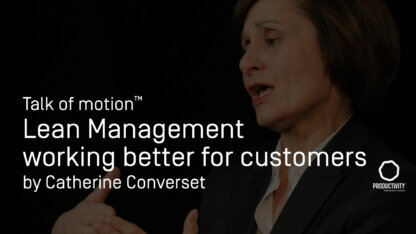How to create a problem-solving culture within organizations
Everyday more and more companies are built on the principles and practices of operational excellence and strategic innovation. Having the capabilities to continually improve existing forms of value, while refreshing, navigating, and introducing new forms of value is paramount to drive desired stability and growth. Yet, all along the implementation path, there will be problems. In order to address this, companies need to create a problem-solving culture within their organizations.
The pathway to a PDCA (plan-do-check-act) employee community
A problem-solving culture refers to an employee community where improvement is part of daily work, improvements can seamlessly be implemented in processes thus improving the value-add to the end customer, and all improvements can systematically be linked to the company’s strategic objectives.
Sustaining a problem-solving culture
Developing a problem-solving culture requires change management. Our model focuses on the 4 E’s:
Expectation Setting
Setting/Resetting expectations is the first step to creating change. In a process where 97% yield is required, 90% yield is unacceptable. Seems obvious, yet in many workplaces shortfalls go unquestioned and unexamined, and over time targets are interpreted as “nice to haves” rather than “need to haves.” Productivity Innovation works with leadership and the employee community to develop a shared understanding of what is normal and what is abnormal through clearly defined and communicated expectations.
Enabling
Once expectations are clear, employees needs problem-solving techniques they can use whenever expectations aren’t met. Since problems come in many shapes and sizes, employees must be able to identify the scope of the problem quickly and apply the proper technique. At this stage, we introduce the following techniques: 5 Whys, CEDAC: Team-Based Problem-Solving, A3 Problem Solving, and DMAIC/Six Sigma*. We teach when and where to apply each for maximum effectiveness.
Empowering
With expectations set, tools outlined, and capabilities in development, the next step is to empower employees to put the tools/techniques into practice. Productivity Innovation will coach your employee community, developing their problem identification and solving skills so they take ownership and apply the problem-solving process as a part of daily work.
Execution Effectiveness
As the employee community launches into active use of the techniques, leaders will need a process to monitor progress. Productivity Innovation will work with your leadership team to develop effectiveness measures and audits that reinforce culture change. We also help you develop a series of countermeasures to use whenever expectations aren’t being met.
Continuous improvement is synonymous with continuous problem solving, therefore having an organizational problem-solving capability is a must.
Productivity Innovation works collaboratively with your leadership team to design a skill development rollout process, then through training, coaching and mentoring sessions we arm your teams with the knowledge and confidence they need to help your organization succeed every day.
Problem-solving techniques
5 Whys
An effective team-based problem-solving technique employing an iterative process of asking “why.” This technique is best used for sporadic problems that occur during the workday (e.g., missing a production target in a single hour in a work shift).
CEDAC: Team-Based Problem-Solving
Another simple yet collaborative team-based problem-solving technique used by natural frontline work teams to solve problems at the source. CEDAC is a structured approach using a fishbone diagram and a series of fact and idea cards. Because this technique requires a deeper understanding of the background conditions, we suggest it for recurring problems (e.g., recurring quality loss).
A3 Problem Solving Method
A team-based problem-solving approach that addresses slightly more complex problems, often requiring a charter and sponsor. It can be more resource intensive, usually involving a cross-functional team. The level of experimentation necessary to determine root cause is also higher (e.g., for resolving an ongoing cost issue).
DMAIC/Six Sigma
A specialized problem-solving technique for cross-functional teams, DMAIC/Six Sigma is based in specific methods for quantitative analysis. Requires a good understanding of variation and the use of software tools, as well as a sponsor, a charter, and management oversight. A high level of experimentation is necessary to determine root cause (e.g., for an ongoing product/service quality issue).



